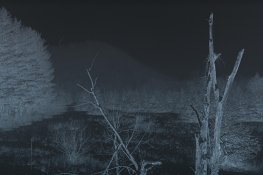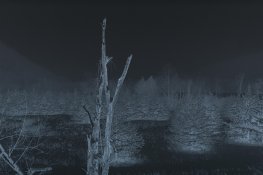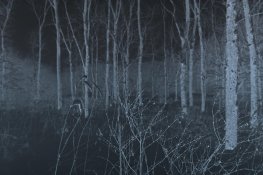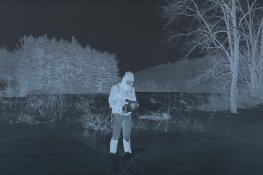I am weighing in here because you bring up a lot of poorly understood exposure issues which I see repeatedly brought up in this forum. Thanks for posting your negs, though (scanned) prints would also be nice. The (scanned) negs. look perfectly acceptable to me.
It was snowing, so apparently there was no direct light. The light is necessarily flat, without contrast. Almost without question, you have a compressed tonal scale (e.g., few zones) to work with. This very likely precludes significant microcontrast within the snow, from which it appears you have judged inappropriately to be blown out. The negs. show about as much contrast a possible given the extant circumstances.
Good light makes good pictures.
This neg., which appears to be exposed similarly to the others, does in fact show texture in the overall features of the snow on the ground. Considering it was snowing, or at least presumably overcast, did you experience the snow as being blindingly white with micro-contrast? Why would you expect your prints to show contrast that was not actually present in the scene? It may be possible to increase contrast in the printing of your negs. That will not however affect the quality of light present in the scene as exposed by you on your film. BTW, there is nothing wrong with the softly lit beautiful light available to you without direct light. It's a matter of expectation and resolution.
Increasing the tonal scale is entirely possible. That
may have gotten you closer to
your visualization of the scenes if you had placed you exposure values differently (...I am dancing around the ZS here, for the sake of the timid). The basic exposure information you have related tells me nothing of this. Given correct placement, you could have
expanded development (increased time), rather than contracted (reduced time).
It isn't clear to me from the negs. where you intended focus to be. Falling snow will blur out a scene. That is another issue.









